The Witcher’s third season marks a stark turning point in the series — and not only because it will be Henry Cavill’s last as Geralt of Rivia. The fifth episode, “The Art of Illusion,” reveals the identity of the rogue mage who hired Rience (Chris Fulton) to hunt Ciri (Freya Allan) and sets up a political upheaval that resets the board of power in the brewing war between the North and Nilfgaard.
[Ed. note: The following contains spoilers for The Witcher season 3 and Andrzej Sapkowski’s Witcher novels.]
In the part 1 finale, Geralt and Yennefer (Anya Chalotra) go to the conclave with the aim of proving Stregobor’s (Lars Mikkelsen) guilt, only to discover the true identity of the traitorous mage is Vilgefortz (Mahesh Jadu). He hired Rience through his secret girlfriend and proxy, Lydia van Bredevoort (Aisha Fabienne Ross).
Though Tissaia (MyAnna Buring) seems unaware of both Vilgefortz’s ill intentions and secret lover, the mage’s two-timing is what did him in: Geralt and Yennefer put the final piece in place after noticing Lydia and Tissaia’s matching jewelry.
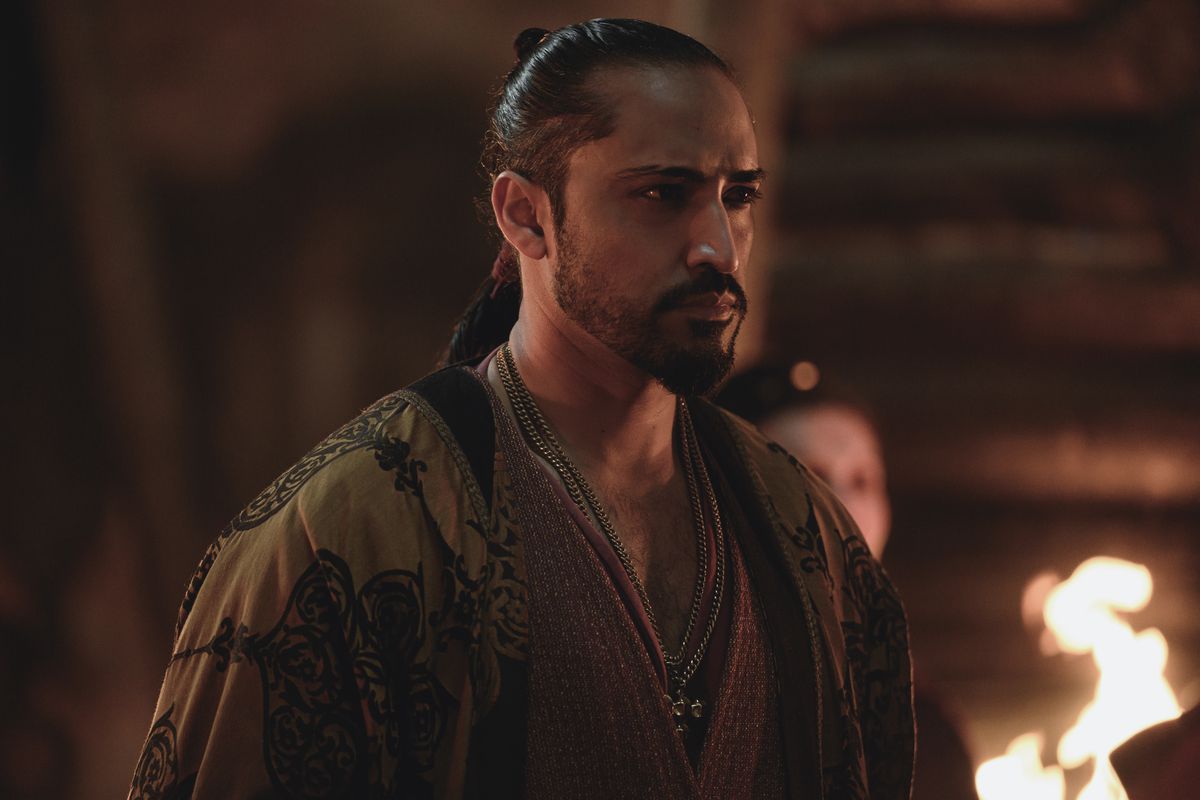
The implications of Vilgefortz being Rience’s master are far-reaching, as they dramatically recolor past events and shape where the Netflix show will go when season 3 returns on July 27. So let’s break down where Vilgefortz’s true allegiance lies, what he wants with Ciri, and the ways this reveal played out differently — and so much better — in the books.
Is Vilgefortz working for Nilfgaard?
Technically, Vilgefortz isn’t working for Nilfgaard, he’s working with Nilfgaard. After Rience figured out he was hunting Ciri for the White Flame (Bart Edwards), he confronted Lydia, who provided that clarification. While this may seem like semantics, there is a huge difference between being a partner and a servant to Nilfgaard. And knowing Vilgefortz is not just another Nilfgaardian loyalist like Cahir (Eamon Farren) but maintains his own agenda sheds a lot of light on his past actions.
Looking back, all of Vilgefortz’s work to seemingly strengthen the Brotherhood was in reality steps to undermine it and strengthen his personal power. In season 1, Vilgefortz was a vocal supporter of helping Cintra in the war against Nilfgaard and led the mages into battle despite the Brotherhood’s lack of support. But during the Battle of Sodden, he came upon an injured member of the Brotherhood and brutally killed him with a mace — a moment that previously confounded viewers.
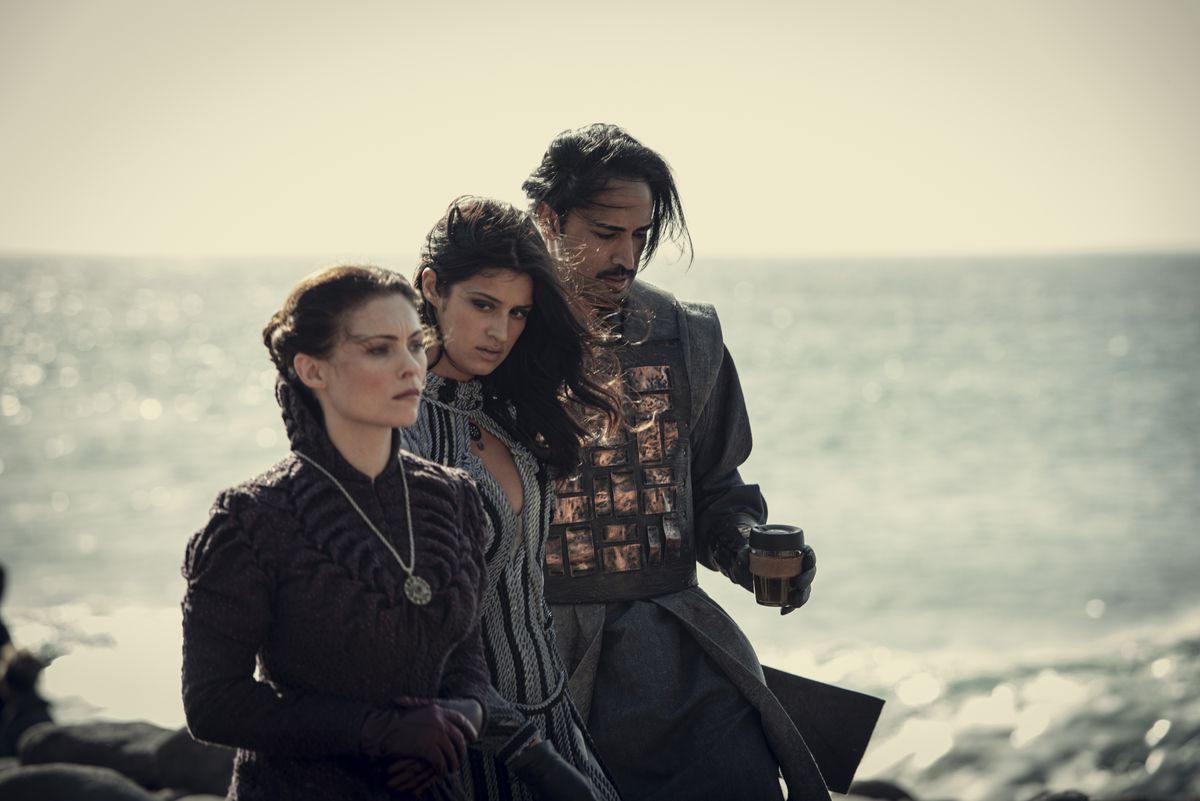
While Yennefer did manage to stop Nilfgaard from taking the keep in the end, it’s likely Vilgefortz’s true goal at Sodden wasn’t victory at all, but to leverage the battle for political influence — and to decimate the mages who were willing to stand against him in the process. After Sodden, Vilgefortz took credit for the victory that rightfully belonged to Yen and used that goodwill to gain a position of power within the Brotherhood. This season, Vilgefortz once again used his public-facing support for the Brotherhood as a mask to hide his underhand dealings, capitalizing off the conclave to frame Stregobor and attempt to recruit Geralt to his side.
In the books, Vilgefortz enters his partnership with Emhyr under the agreement that if Vilgefortz gives Ciri to Nilfgaard, he’ll rule the provinces that would replace the Northern Kingdoms. However, as poor Tissaia learned the hard way, Vilgefortz is a man willing to use and betray anyone if it serves him. So, how far the partnership between Vilgefortz and the White Flame ultimately goes will depend on how long their individual objectives align. And speaking of objectives…
What does Vilgefortz want with Ciri?
Nothing good, that much is obvious. While we know Emhyr wants to marry Ciri — his daughter, mind you — and make her his queen, there are indications Vilgefortz has a different purpose for the princess in mind.
Episode 2 exposed Vilgefortz’s twisted experiments attempting to turn Aretuza novices into Ciri imposters (though most turned into flesh monsters instead). Geralt hypothesized that these experiments are meant to find a way to control Ciri’s mind — something that would prove beneficial in keeping her captive if Nilfgaard does get ahold of her. But surely there are easier ways to do so. In fact, the books’ false Ciri storyline didn’t bother with magic at all. They just found an unlucky orphan girl with a passing resemblance to the princess and publicly recognized her as Ciri while the hunt for the real Ciri continued.
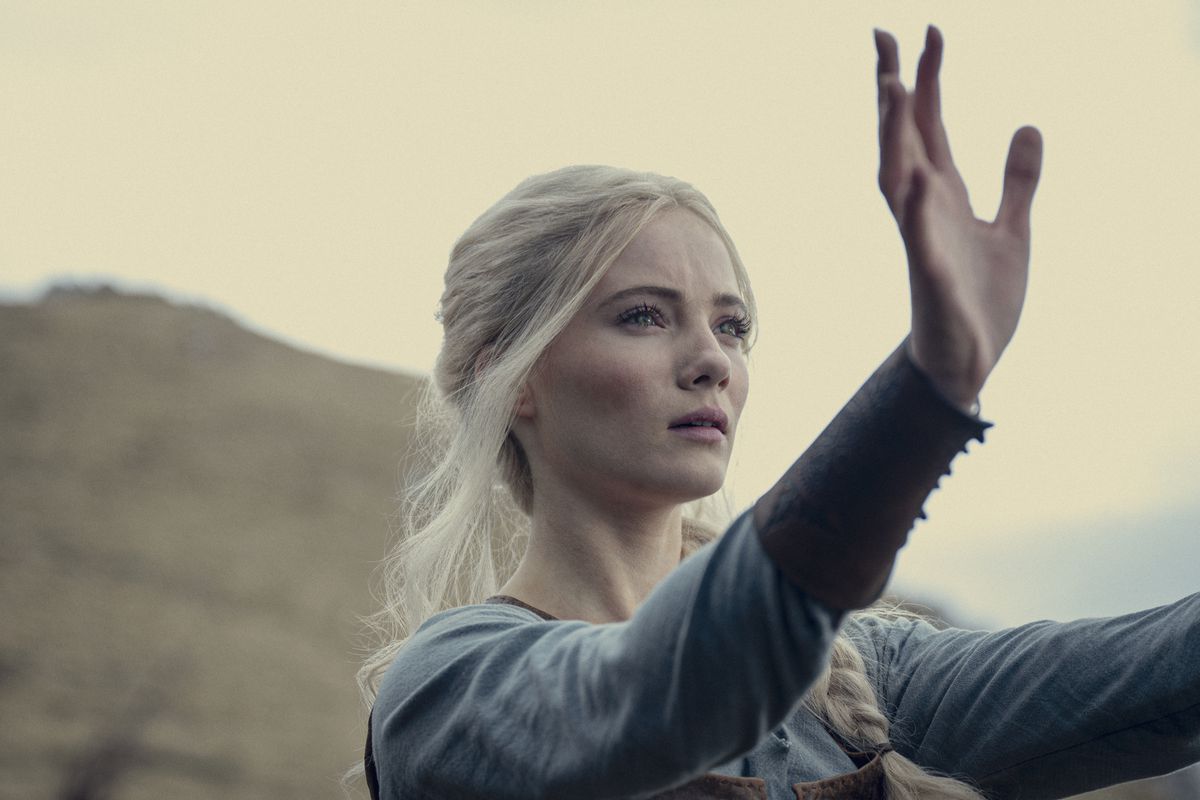
But if Vilgefortz doesn’t want to make Ciri Emhyr’s queen, what does he want with her? The biggest clues we have to his true agenda in the show are the corrupted portals and the Book on Monoliths, which holds the key to traveling between spheres. While it’s unlikely Vilgefortz’s master plan is merely to banish the elven novices to another world — as Istredd suggested — if he controls both the ability to travel between worlds and the princess prophesied to end the world, Vilgefortz will be primed to leverage the destruction into astounding power and influence, similar to how he instigated the Battle of Sodden to gain power within the Brotherhood.
How is the Vilgefortz reveal different in the books?
The reason Geralt goes to the conclave in the second Witcher novel, Time of Contempt, has nothing to do with tracking Rience’s master, protecting Ciri, or anything of stake or substance; he’s just there to be Yennefer’s arm candy. As such, the conclave doesn’t serve up any on-the-nose buildup toward the Vilgefortz revelation — whereas the series all but paints “BAD GUY!!!” on Vilgefortz’s forehead in red paint before Geralt and Yennefer finally figure it out. In the books, Geralt just sort of… stumbles into the knowledge.
After spending the entire event avoiding any involvement in the brewing war between the North and Nilfgaard, Geralt and Yennefer retire for the evening. Partway through the night, Geralt wakes up needing to relieve himself. He decides he has more scruples than peeing off the balcony like a brute, so he decides to walk down to the garden to piss on the flowers directly, like a gentleman. Along the way, Geralt just so happens to walk into an ongoing confrontation between two sects of mages — those loyal to the North, led by Philippa (Cassie Clare), and those loyal to Nilfgaard, led by Vilgefortz. In fact, Geralt only learns Vilgefortz is the leader of the traitorous mages when he overhears a casual mention of it during the confusing fray.
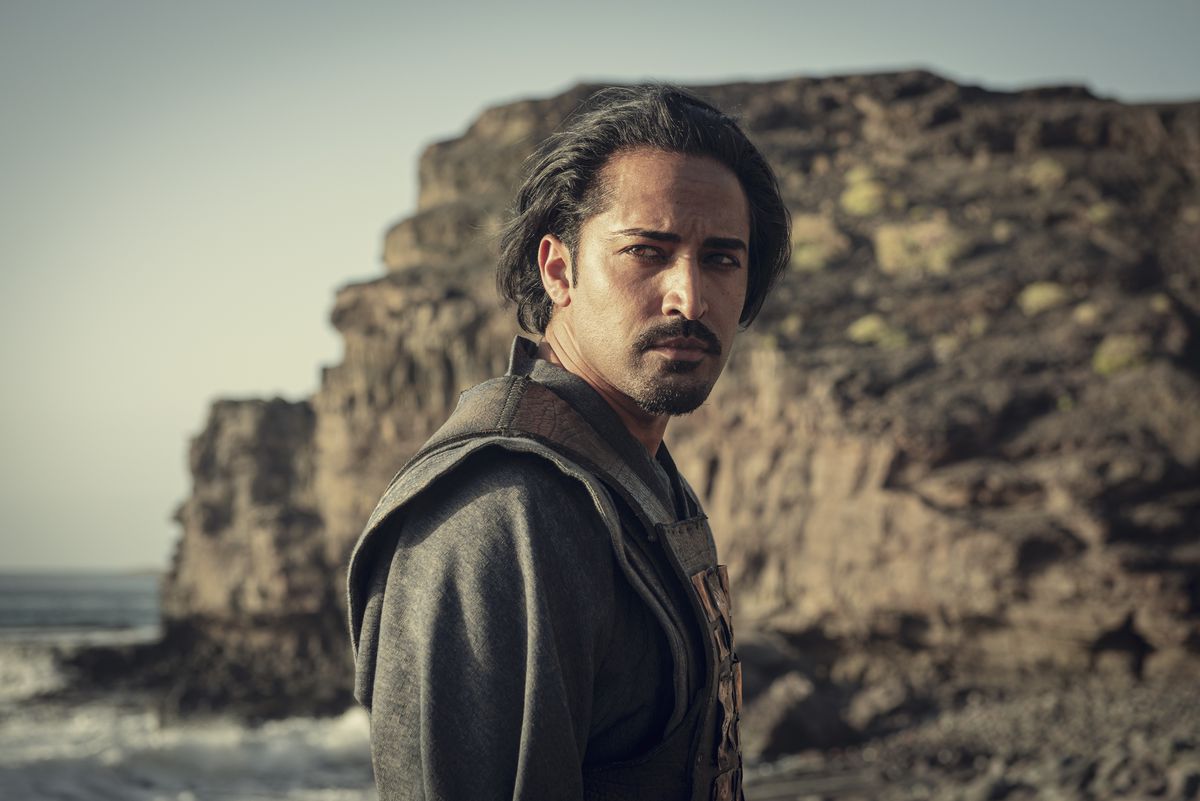
Geralt accidentally walking into the middle of a coup on the way back from using the bathroom is not only so much funnier than how they handled this in the show, but it’s also so much more Geralt. This man’s entire deal is wishing to stay out of the drama, but he just keeps stepping in it. And once again, the cost of his neutrality proves quite high, as the Brotherhood doesn’t survive the Thanedd coup. In changing how Geralt learns Vilgefortz is working with Nilfgaard, the show not only replaces a unique path to discovery with a predictable one, but removes the best character element from this climactic moment.
By the time the books get to this point, readers had also been perfectly primed to understand the political nuances of the Vilgefortz revelation and its fallout, as Sapkowski spends the entirety of the conclave laying the groundwork for these events rather than sending Yennefer and Geralt off on some wild goose chase. In the novel, Vilgefortz — not Yennefer — calls for all the mages to gather. The books had already established Vilgefortz as an enigmatic leader who plays chess while everyone else still struggles through checkers. So when the conclave is called, no one, let alone Yennefer, is naive enough to think the event is about anything as idealistic as mage unity. Rather, both the mages loyal to the North and to Nilfgaard are eager to use the event for their political purposes.
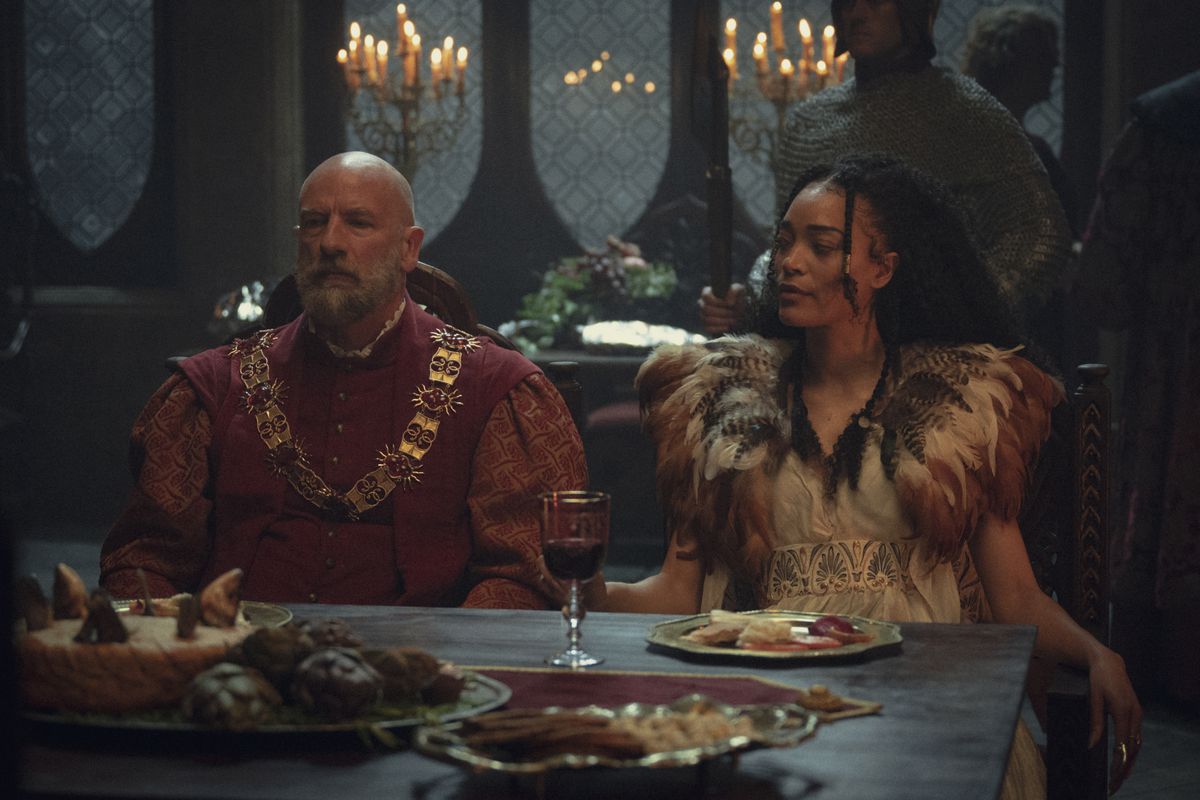
Unlike in the show, where Philippa and Dijkstra (Graham McTavish) are forced to go to the conclave by the Redanian king, they go to the event for the sole purpose of striking against Vilgefortz and the other mages aligned with Nilfgaard. Meanwhile, Vilgefortz is rallying his own forces to strike at the northern mages. And at the very same time, the Northern Kingdoms time a preemptive strike against Nilfgaard to the conclave, kickstarting the Second Northern War just as the Brotherhood of Sorcerers crumbles. In short, it’s a complete political clusterfuck, and Geralt finds himself in the thick of it simply because he needed a late-night pee.
The Vilgefortz reveal, and resulting battle of Thanedd, is a seismic turning point in the series, as it completely reshuffles the balance of power across the Continent. But what makes the book’s portrayal of it so thrilling is its deliberate disarray, throwing readers headfirst into the action after providing just enough crumbs of information to follow along with Geralt as he stitches together the bigger picture. Yet the show scraps all this for a rote investigation caper and some ham-fisted plot reveals that expose Vilgefortz as Rience’s master but obscure the far-reaching implications of why all this matters.
In the world of The Witcher, magic lies in harnessing chaos. And by stripping the Vilgefortz reveal of its political nuance and purposeful chaos, the Netflix adaptation lost its magic in the process.
The Witcher season 3 volume 2 returns to Netflix with three more episodes on July 27.
- SEO Powered Content & PR Distribution. Get Amplified Today.
- PlatoData.Network Vertical Generative Ai. Empower Yourself. Access Here.
- PlatoAiStream. Web3 Intelligence. Knowledge Amplified. Access Here.
- PlatoESG. Automotive / EVs, Carbon, CleanTech, Energy, Environment, Solar, Waste Management. Access Here.
- BlockOffsets. Modernizing Environmental Offset Ownership. Access Here.
- Source: https://www.polygon.com/23775445/the-witcher-vilgefortz-villain-nilfgaard
- :has
- :is
- :not
- :where
- $UP
- 1
- 27
- a
- ability
- About
- across
- Action
- actions
- adaptation
- After
- again
- against
- agenda
- Agreement
- ahead
- aim
- align
- aligned
- All
- alone
- along
- already
- also
- an
- and
- Another
- any
- anyone
- anything
- ARE
- ARM
- Art
- AS
- At
- attempting
- avoiding
- back
- Balance
- Battle
- BE
- because
- been
- before
- being
- beneficial
- BEST
- Better
- between
- Big
- bigger
- Biggest
- board
- Books
- both
- Break
- but
- by
- called
- Calls
- came
- candy
- capitalizing
- casual
- changing
- Chaos
- character
- chase
- Chess
- Chris
- complete
- completely
- Concentrates
- confusing
- contains
- continent
- continued
- control
- controls
- corrupted
- Cost
- credit
- deal
- Despite
- DID
- difference
- different
- Dinner
- directly
- discover
- discovery
- do
- does
- Doesn’t
- down
- Drama
- dramatically
- during
- eager
- easier
- element
- else
- end
- enough
- Enters
- Entire
- entirety
- episode
- Episodes
- established
- Ether (ETH)
- evening
- Event
- events
- everyone
- experiments
- exposed
- Fabienne
- fact
- fallout
- false
- far
- far-reaching
- fifth
- Figure
- figured
- final
- finale
- Finally
- Find
- finds
- Fire
- follow
- following
- For
- Forces
- found
- FRAME
- from
- front
- Gain
- Garden
- gather
- get
- Girl
- gives
- Go
- goal
- Goes
- good
- Goodwill
- groundwork
- had
- Hands
- happens
- Hard
- Harnessing
- Have
- he
- helping
- her
- Hide
- High
- him
- his
- holds
- How
- However
- HTTPS
- huge
- hunt
- Hunting
- Identity
- if
- Illusion
- implications
- in
- indications
- individual
- influence
- information
- instead
- intentions
- into
- investigation
- involvement
- IT
- ITS
- jewelry
- July
- just
- Keep
- keeping
- Key
- King
- Know
- Knowing
- knowledge
- Lack
- Last
- leader
- learned
- Led
- Leverage
- lies
- light
- like
- likely
- Long
- looking
- lost
- Lot
- loyal
- loyalist
- magic
- maintains
- make
- MAKES
- man
- manage
- mask
- master
- matching
- Matters
- May..
- meant
- Meanwhile
- member
- merely
- Middle
- mind
- moment
- more
- most
- much
- needed
- needing
- Netflix
- night
- no
- North
- nothing
- novel
- novices
- Nuance
- objectives
- obvious
- of
- off
- on
- once
- ONE
- ongoing
- only
- or
- Other
- out
- own
- paint
- part
- partner
- Partnership
- Passing
- past
- path
- personal
- picture
- piece
- Place
- plan
- plato
- Plato Data Intelligence
- PlatoData
- played
- plays
- Point
- political
- Polygon
- poor
- position
- power
- Predictable
- previously
- process
- Profile
- protecting
- Prove
- proves
- provided
- providing
- provinces
- proxy
- publicly
- purpose
- purposes
- put
- rather
- readers
- real
- Reality
- reason
- recognized
- recruit
- Red
- replace
- resulting
- returns
- reveal
- Reveals
- right
- rocky
- Rule
- same
- scraps
- Season
- Season 1
- Second
- Secret
- seem
- seems
- semantics
- sending
- Series
- serve
- serves
- set
- Sets
- Shape
- she
- Short
- show
- side
- similar
- simply
- sit
- So
- some
- something
- speaking
- Spending
- stake
- stand
- stands
- stark
- stay
- stepping
- Steps
- Still
- Stop
- Strengthen
- strike
- stripping
- Struggles
- stumbles
- substance
- such
- support
- supporter
- surely
- survive
- table
- taking
- than
- that
- The
- The Witcher
- the world
- their
- There.
- These
- they
- think
- Third
- this
- those
- though?
- three
- thrilling
- Through
- Throwing
- time
- to
- together
- took
- toward
- Tracking
- travel
- Traveling
- true
- TURN
- Turned
- Turning
- turning point
- two
- Ultimately
- under
- Undermine
- understand
- unique
- unity
- unlikely
- upheaval
- upon
- use
- used
- using
- very
- victory
- viewers
- volume
- walking
- want
- wants
- war
- was
- Way..
- ways
- we
- webp
- were
- What
- when
- whereas
- which
- while
- white
- WHO
- why
- Wild
- will
- willing
- wishing
- with
- within
- Work
- working
- world
- world’s
- would
- Yen
- yet
- you
- zephyrnet









